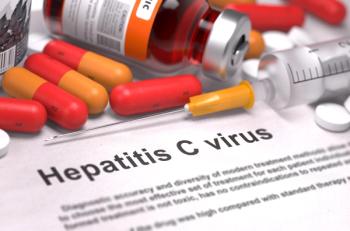
Pharmacy Practice in Focus: Oncology
- July 2025
- Volume 7
- Issue 5
MRD Monitoring May Help Redefine Long-Term Goals in Myeloma Therapy
Key Takeaways
- MRD testing in MM uses next-generation flow cytometry and sequencing to detect minimal cancer cells, guiding personalized treatment strategies.
- MRD negativity can inform treatment de-escalation, with studies showing safe discontinuation and low progression risk in standard-risk patients.
MRD testing transforms multiple myeloma treatment, guiding personalized strategies and improving patient outcomes through innovative testing methods.
Measuring minimal residual disease (MRD) is a growing area of interest in the treatment landscape of multiple myeloma (MM), an incurable hematologic malignancy characterized by increasingly poorer responses as patients progress through therapy. MRD testing can be a useful tool and give valuable insights into disease status, helping guide more personalized treatment strategies. At the 2025 American Society of Clinical Oncology Annual Meeting, experts discussed the current landscape of MRD testing and shared valuable insights about how to measure MRD and how to use it to determine optimal treatment intensity and durations, thereby guiding treatment decision-making.
Benefits and Basics of MRD
MRD refers to the small number of cancer cells in the body after cancer treatment, which are difficult to detect with morphology and standard blood tests. It is measured through bone marrow samples using 2 methods: next-generation flow cytometry (NGF) and next-generation sequencing (NGS), which can detect abnormal plasma cells and as few as 1 cancer cell in 100,000 normal cells. NGF and NGS can also help identify unique genetic sequences of myeloma cells. There is investigation into detecting MRD in the peripheral blood; however, this research is in its infancy.1
Positive MRD test results indicate that disease was still detected after treatment, whereas a negative result means no disease was detected after treatment. MRD negativity at a threshold of less than 10⁻⁵ or 10-6 is best for guiding decisions, and trajectory might inform treatment intensity and duration. The goal of MRD testing is to determine how deeply a patient has responded to treatment by quantifying the remaining cancer cells. MRD status can also aid in navigating treatment de-escalation or cessation and how to manage MRD resurgence.1
In 2006, the International Myeloma Working Group (IMWG) published the first set of international response criteria for MM, establishing a consensus that unified various response criteria previously used by national and international cooperative groups. Ten years later, they updated the consensus criteria for response to include MRD assessments, acknowledging that the standardization of NeuroFlow immunophenotyping profiles was beginning to change the field.1
The FDA granted marketing authorization for the clonal acidic assay for detecting residual disease in MM in 2018. In 2024, the Oncologic Drug Advisory Committee voted in support of using MRD for accelerated approval of new myeloma treatments, defining MRD as 10-5 at 9 and 12 months. However, as MRD testing evolves, evaluating treatment responses in patients becomes more complex.1
Determining Treatment De-Escalation With MRD-Negativity
MRD negativity can guide decisions about continuing maintenance therapy, considering transplant, and potential treatment de-escalation; however, not all patients respond the same to these treatment approaches. Standard-risk patients tend to have better outcomes with MRD negativity, and those with sustained MRD negativity can have a progression risk as low as 6% after 4 years, whereas high-risk patients may require different strategies. In some cases, patients can safely discontinue treatment after achieving sustained MRD negativity.1
In the ATLAS trial (NCT02659293), patients who were MRD-negative after 6 cycles of carfilzomib (Kyprolis; Onyx Pharmaceuticals) could discontinue treatment, showing that treatment can be safely de-escalated while maintaining good outcomes. The trial compared carfilzomib with lenalidomide (Revlimid; Celgene Corporation) and dexamethasone in patients with standard-risk disease. Patients who de-escalated carfilzomib therapy performed better than patients on lenalidomide alone.1,2
“So, we can give time-related courses of therapy, use MRD to guide our decision-making, and still get to a better point than where we started,” explained Benjamin Avi Derman, MD, from the University of Chicago. “But the question that I get all the time in clinic is, ‘Doc, can I add or stop all my treatment?’ And you just got done hearing about the fact that maintenance therapy can help convert patients with MRD-positive disease to MRD-negative and sustained.”1
Lenalidomide is the standard maintenance therapy for MM and is typically used after initial treatment and transplant. However, it is associated with a number of challenges, such as the persistence of adverse effects, which impact quality of life, as well as significant financial toxicity.1
“Maintenance lenalidomide has no established end date right now,” said Derman. “Every trial that's been done has, I shouldn't say every, but most have been done with definite lenalidomide until progression. It impacts quality of life. I certainly see that every day in my clinic; it can be associated with second cancers, especially second blood cancers, which is the most feared complication, in my opinion, and it carries financial toxicity. This is a drug that typically costs $18,000 a month in the US.”1
In the MRD to MRD2STOP study (NCT04108624), investigators evaluated patients who could discontinue treatment based on MRD status and were MRD-negative at the 10-6 threshold by both NGS and PET scan. The data showed that 68% of patients remained MRD-negative 3 years after stopping treatment, and 85% of patients were alive without progression. There were no significant differences in outcomes based on high-risk cytogenetics, quadruplet or other induction therapies, transplant status, or consolidation or maintenance duration.1,3
Notably, the trial was designed to maintain treatment discontinuation upon MRD resurgence to understand the natural history of MRD changes. The study findings indicated that some patients who became MRD positive later returned to MRD negative, suggesting that patients can have treatment-free periods while maintaining good outcomes.1
Methods of Managing MRD Resurgence
MRD resurgence refers to the reappearance of detectable myeloma cells after a period of MRD negativity and is most common in years 3 to 4 for patients treated with doublet therapies. Not all MRD resurgences lead to clinical progression, and some patients remain asymptomatic.1
Unlike the MRD2STOP study, a Greek discontinuation study published in Blood assessed initiating lenalidomide maintenance upon MRD resurgence.1,4
“They had taken those patients off of maintenance and then, per protocol, restarted on lenalidomide maintenance. Approximately 23% became MRD-positive,” explained Neha Korde, MD, from Memorial Sloan Kettering Cancer Center. “If you look within that cohort, about a third of those patients clinically progressed. So even with restarting on lenalidomide maintenance, two-thirds of those patients were essentially asymptomatic.”1
Building on these findings, the investigators observed that MRD resurgence following quadruplet therapy appeared to be more concerning, with a median time to progression as short as 10 months. Encouragingly, some patients were able to reachieve MRD negativity after restarting treatment. Notably, a subset of patients who became MRD-positive temporarily returned to MRD-negative status without immediate intervention—many of these patients expressed that they valued the treatment-free period, even if disease progression ultimately occurred.1
MRD resurgence remains a critical marker in understanding disease dynamics, particularly in the context of transplant. Achieving MRD negativity post transplant continues to be an important milestone for many patients, offering a potential window of deep remission. However, the possibility of MRD resurgence underscores the need for careful monitoring and a more nuanced understanding of when and how to intervene.1
Looking ahead, MRD assessment is expected to play an increasingly central role in guiding treatment decisions, but further research is needed to clarify how MRD status should inform treatment intensity and duration. Incorporating MRD as an end point in clinical trials will be essential to validate its clinical utility and drive the development of less invasive testing methods, such as peripheral blood assays, that can enhance patient experience and accessibility. As the field evolves, MRD-driven strategies have the potential to not only personalize care but also to help redefine long-term treatment goals in MM.
REFERENCES
1. Korde N, Derman B, Costa L, et al. Is minimal residual disease testing helpful in managing multiple myeloma? 2025 ASCO Annual Meeting. May 30, 2025, to June 3, 2025. Chicago, IL.
2. Trial of carfilzomib, lenalidomide, dexamethasone versus lenalidomide alone after stem-cell transplant for multiple myeloma. Updated January 23, 2025. Accessed June 1, 2025. https://clinicaltrials.gov/study/NCT02659293
3. Study to assess for measurable residual disease (MRD) in multiple myeloma patients. Updated July 31, 2024. Accessed June 1, 2025. https://www.clinicaltrials.gov/study/NCT04108624
4. Terpos E, Malandrakis P, Ntanasis-Stathopoulos I, et al. Sustained bone marrow and imaging MRD negativity for 3 years drives discontinuation of maintenance post-ASCT in myeloma. Blood. May 15, 2025. doi:10.1182/blood.2024027686
Articles in this issue
Newsletter
Stay informed on drug updates, treatment guidelines, and pharmacy practice trends—subscribe to Pharmacy Times for weekly clinical insights.




















































































































































































































